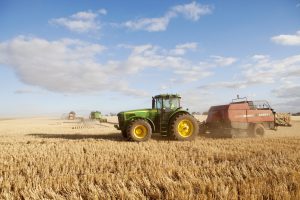
One of the best things about working in this role is that I get to work across production zones throughout South Australia and into Victoria. As a result, there is always a large range of discussions taking place with different risk appetites, production capabilities and crop types being grown. This year, there are some themes emerging across the state and further afield. So, what are growers asking about harvest this season?
If I book contracts, that means I’m reserving space at a delivery site?
Unfortunately, this isn’t the case. A contract just locks in the price, tonnage and terms for the grain received, and there is no obligation that this guarantees you space for those tonnes to be delivered. If unable to deliver to a particular site, it just means the terms of the contract will have to be renegotiated.
There are already a number of rumours circulating through a few different regions that the silo capacity at harvest will not be able to keep up with the crop. This is particularly true in regions where a crop size has not been expected for over five years. A lack of labour, combined with fewer delivery points, larger header capacity, and grain prices pulling grain from the east and into the South Australian system are all likely to add congestion to the system. If growers are forced into smaller delivery windows, this is pushing the case for more on-farm storage, in particular temporary storage to manage logistics and quality.
NSW is still a factor, right?
Correct. The truth is that the crop in New South Wales is likely to be affected by too much water, but whether this is to do with quality or quantity of grain, there’s still a lot that’s unknown. There are areas of NSW that are waterlogged, and areas that are definitely too wet to get onto with tractors, let alone harvesters and chaser bins, but there will be a crop out of NSW.
With a forecast La Nina and more rainfall over summer for the east coast, the next comment I hear is they won’t be able to harvest it. This is yet to come to fruition, so it is worth taking with a pinch of salt, because each La Nina event is different. What is certain is that capacity on the shipping stem out of SA is fully booked due to the proven ability of our system to handle logistics last year. However, our storage systems were dealing with a smaller crop last year.
Shouldn’t our grain be worth more?
This is the million-dollar question, given the volatility and uncertainty felt by markets in the last 12 months, and the answer is not necessarily. There’s a lot of reason that our grain is worth less than global values currently, and one such reason is that we have some! There has been ongoing drought through the US, Europe and into Argentina over the past couple of years, so globally we are looking at record low stocks. On the flip side, Australia is coming out of three large crops. It’s a similar case to when Australia had an ongoing drought, we were trading at record high numbers above global values – we had no grain, but the rest of the world did.
The other part to why we’re trading at a discount is the issues with shipping and logistics. If grain can’t move efficiently to a boat on time, it makes it more expensive to do business, as every day the boat waits to be filled, it costs the trader. It is also worth remembering that South Australia maintains some of the highest prices in the country for grain at this point in time. Two things help this; multiple ports and competitive supply chains.
How am I meant to manage cashflow?
The late start to the season and ongoing rainfall through many regions mean that the start to harvest has probably been pushed back this year. Fertiliser and chemical pre-payments as well as large overdrafts covering this year’s costs mean many businesses are stretched financially coming into harvest. This makes managing cashflow and early sales more important from a contracting point of view. The reality is that the crop is bigger than last year, and the cost of finance is also more expensive. The trade has a lot of grain to buy this year, which may see some of the tools around payment used last year dusted off and used again. This might be January transfers, longer payment terms or just dropping the price so low so the farmer holds grain, and the trade can secure more funds to buy more crop.
The reality is that each and every harvest throws us some curveballs to manage and work through. As a grower, having contingency plans and a way to manage the potentially large crop yet to come off the paddock, will get you most of the way. Planning out expected cashflow, having a plan around storage and back up storage for pulses and poor-quality grain, taking part in profitable numbers; these are all strategies to start thinking about for managing this year’s harvest.
Big crops always tend to get bigger.